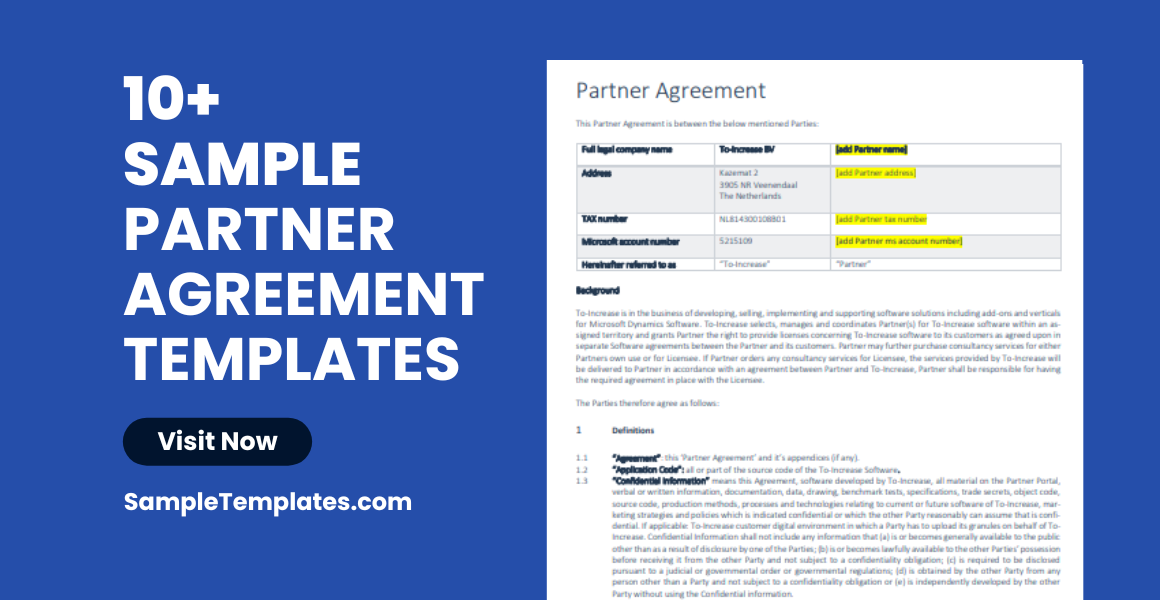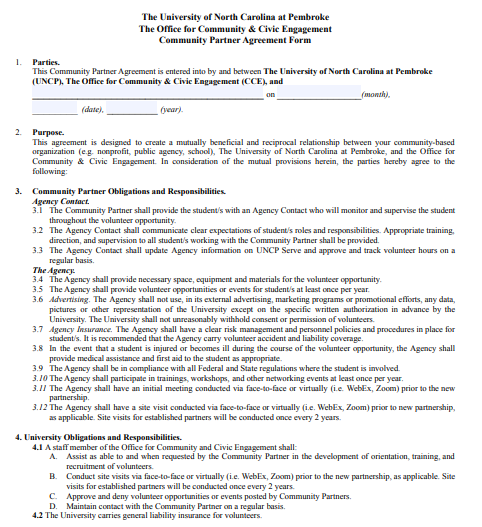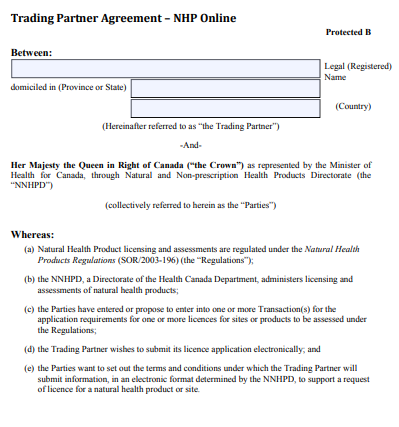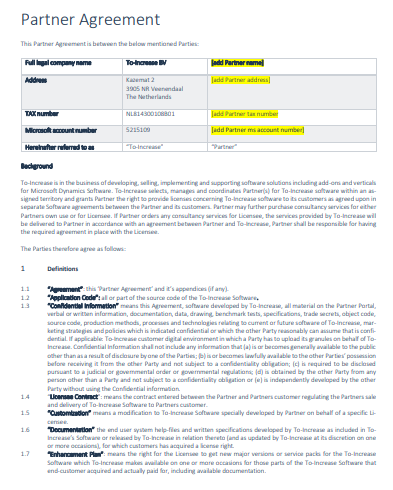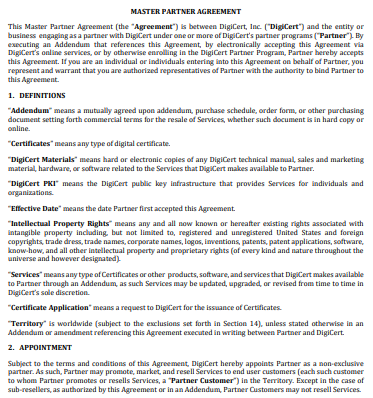10+ Partner Agreement Samples
1. Sample Strategic Partner Agreement Template
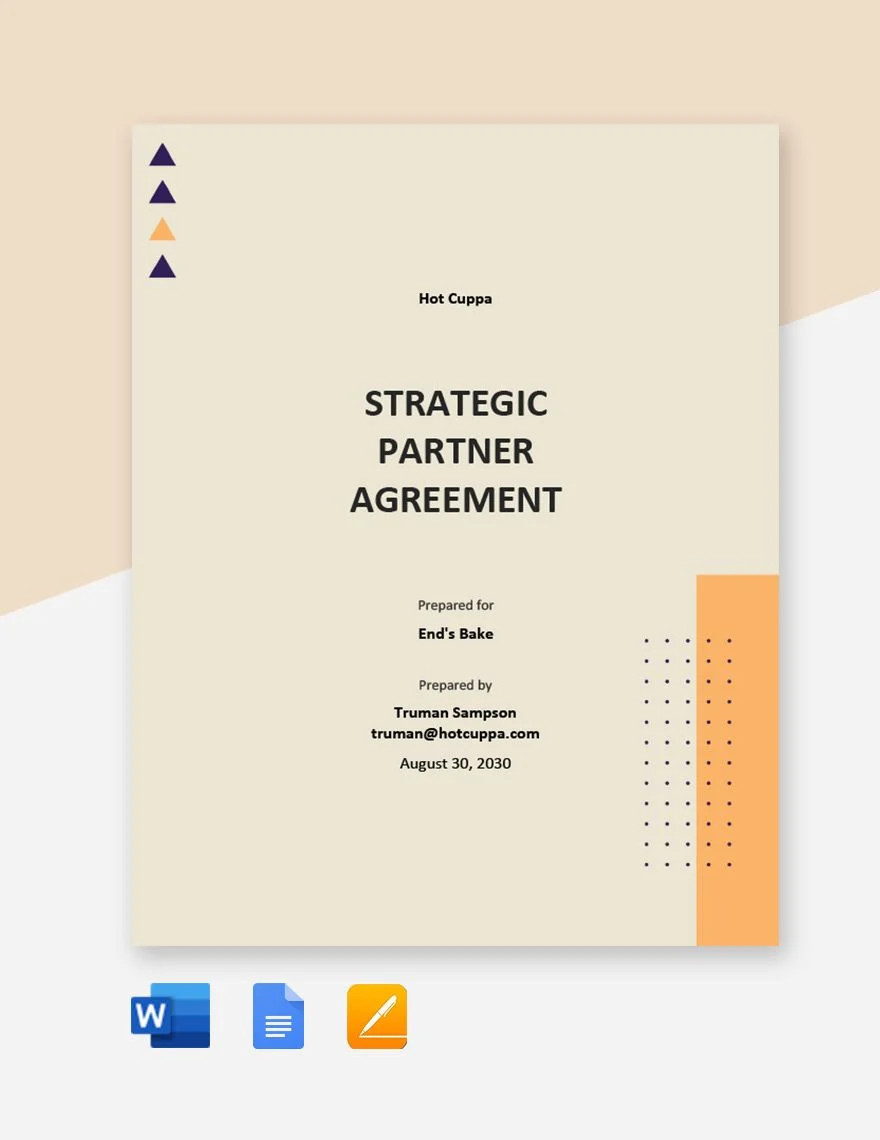
2. Sample Business Partner Contract Agreement Template
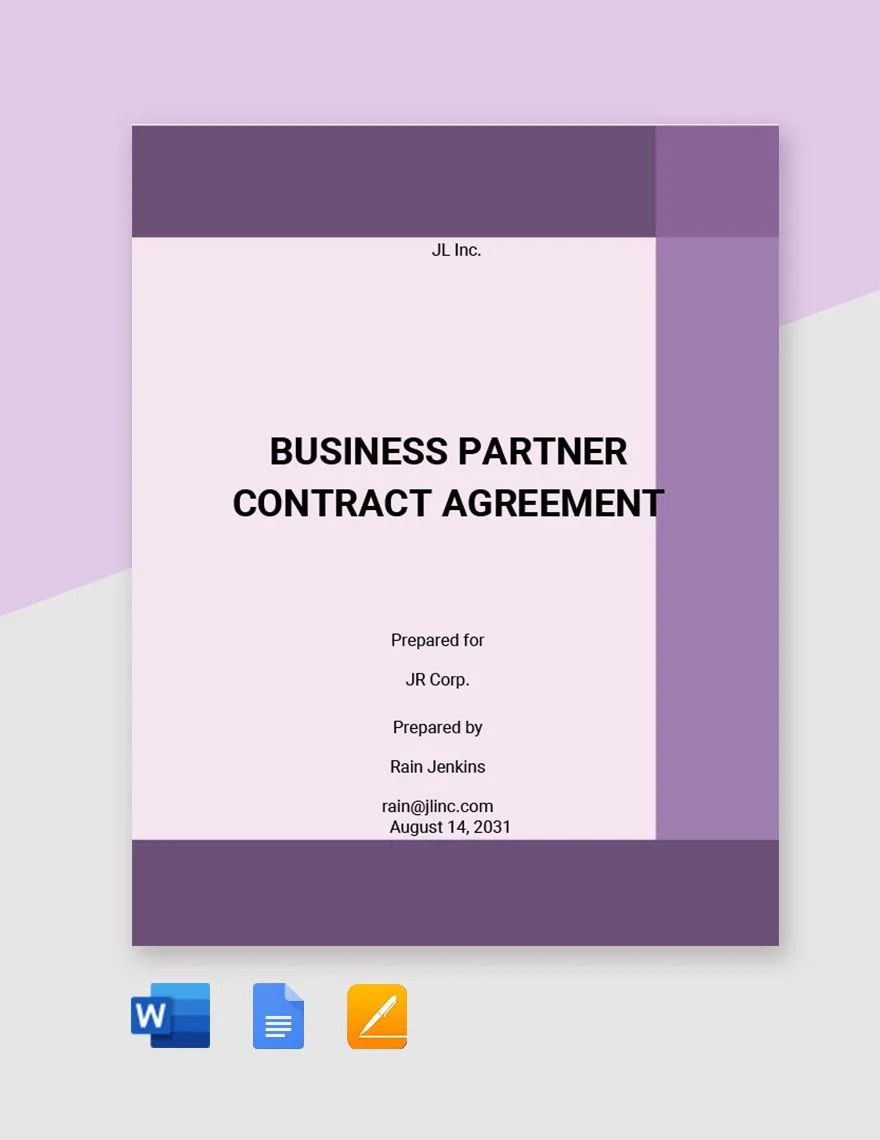
3. Sample Technology Partner Agreement Template
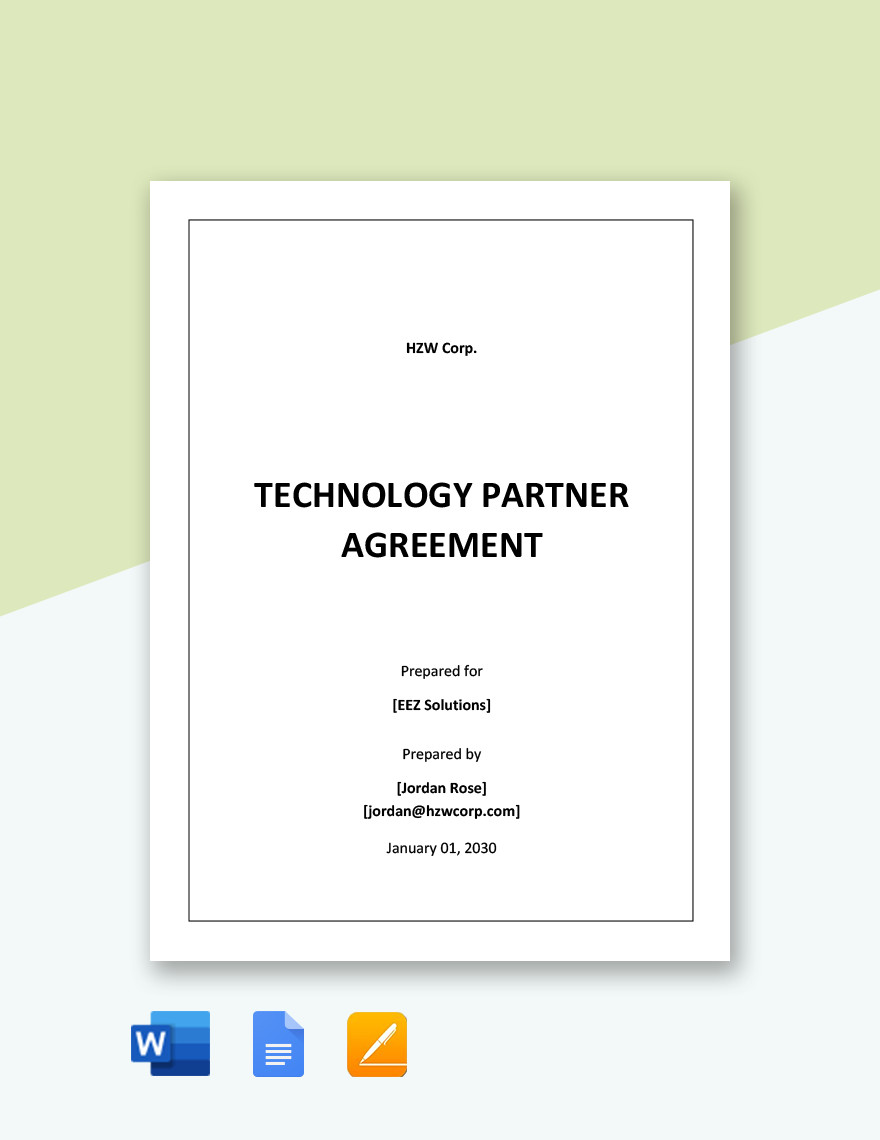
4. Sample IT Channel Partner Agreement Template
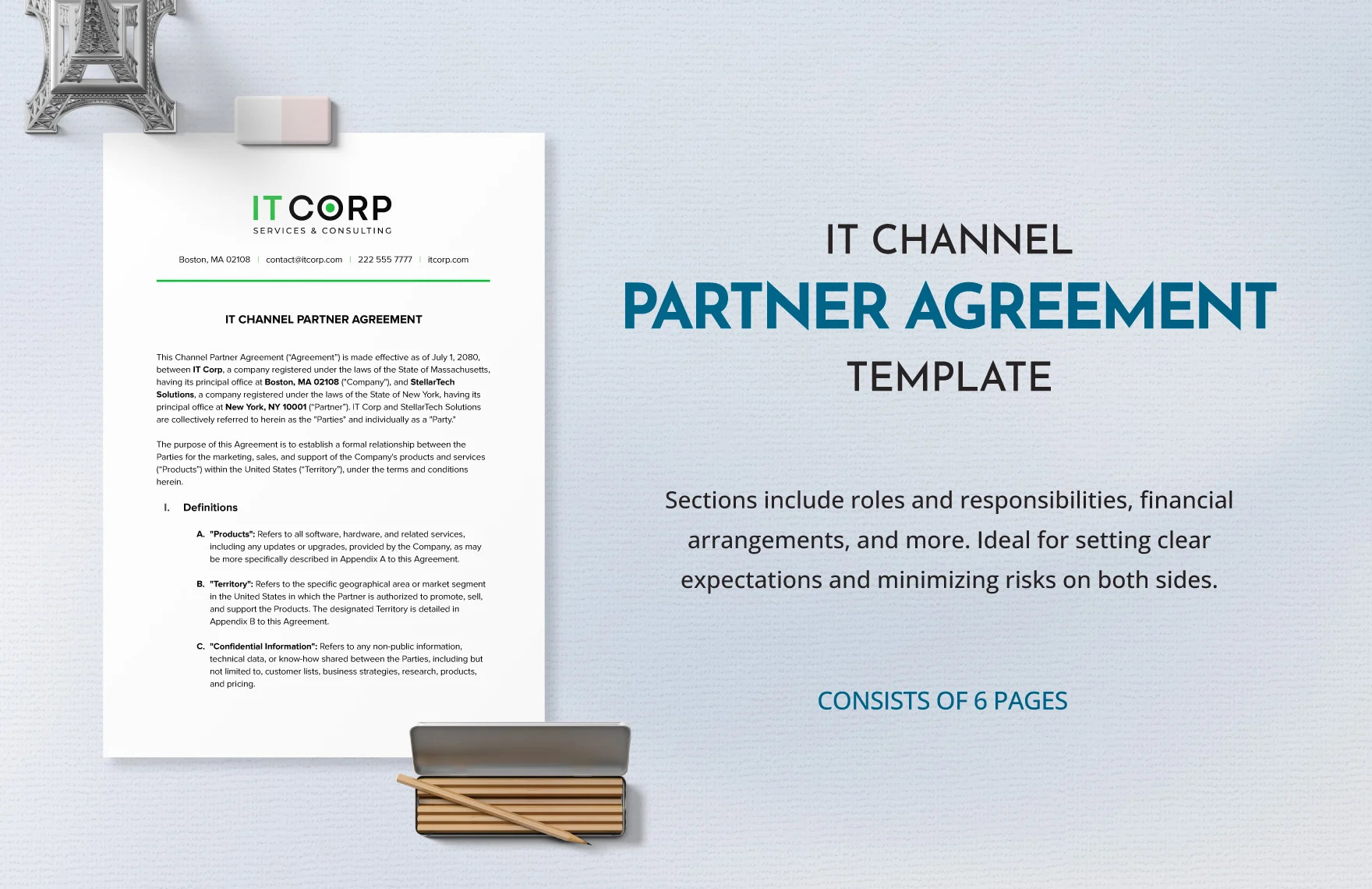
5. Sample Silent Partner Agreement Template

What is a Partner Agreement?
A Partner Agreement is a crucial legal document that outlines the terms and conditions, and operations of a partnership between two or more entities. This agreement is fundamental in defining how the partnership will function, the roles and responsibilities of each partner, and how profits and losses will be shared.
Essence and Purpose
The essence of a Partner Agreement lies in its ability to provide a clear framework for the partnership. Its purpose is to prevent misunderstandings and disputes by detailing every aspect of the partnership arrangement. For instance, if two entrepreneurs are starting a joint venture, a Partner Agreement would specify each person’s sample investment, control level, and how decisions are made.
Components of Partner Agreement
A comprehensive Partner Agreement includes several key components:
- Partnership Details: Names and details of the entities involved.
- Duration of Partnership: Whether it’s for a specific project or ongoing.
- Capital Contributions: How much each partner is investing.
- Profit and Loss Distribution: The method of dividing profits and losses.
- Roles and Responsibilities: Specific duties of each partner.
- Decision-Making Process: How decisions are made and disputes resolved.
Elements of Partner Agreement
A Partner Agreement is a vital document in any business partnership. It sample outlines the terms of the relationship between partners and ensures a mutual understanding of responsibilities and expectations. Here, we delve into the key elements that constitute a Partner Agreement.
- Identification of Parties: Clearly state the names and details of all entities entering the partnership. This section establishes who is involved and their legal status (individuals, companies, etc.).
- Nature of the Partnership: Define the purpose of the partnership. This could range from a specific project to a long-term business venture. It sets the scope and limitations of the partnership.
- Capital Contributions: Detail the financial contributions of each partner. This includes initial investments, how future investments will be handled, and any non-monetary contributions like expertise or assets.
- Profit and Loss Distribution: Specify how profits and losses will be shared among partners. This could be based on the percentage of capital contribution or another agreed-upon formula.
- Roles and Responsibilities: Outline the specific duties and responsibilities of each partner. This section ensures that each partner knows their role in the partnership and what is expected of them.
- Decision-Making Process: Describe how decisions will be made within the partnership. This includes day-to-day management decisions and major decisions like business expansion or dissolution.
- Dispute Resolution: Provide a mechanism for resolving conflicts. This could include mediation, arbitration, or a specific process for handling disagreements.
- Duration of the Partnership: State the length of the partnership, whether it’s for a fixed term, tied to a specific project, or indefinite.
- Termination Clauses: Detail how the partnership can be dissolved, including the process for a partner to exit the partnership and how assets and liabilities will be handled.
- Non-Compete and Confidentiality Clauses: Protect the partnership’s interests by preventing partners from engaging in competing businesses and ensuring sensitive information is kept confidential.
- Amendments: Specify how the format agreement can be modified, outlining the process for making changes to the agreement.
Importance of Partner Agreement
The importance of a Partner Agreement cannot be overstated. It serves as a legal safeguard, ensuring that all partners are on the same page and that their interests are protected. For example, in a tech startup partnership, the agreement would protect intellectual property and define the equity split.
Benefits of Partner Agreement
A Partner Agreement is more than just a formal document; it’s a roadmap for a successful business relationship. This agreement brings numerous benefits, crucial for the smooth operation and growth of a partnership. You can also see more templates like Business Partnership Agreement Samples. Let’s explore these advantages in detail.
- Clarity in Roles and Responsibilities: A Partner Agreement clearly outlines each partner’s role and responsibilities. This clarity prevents misunderstandings and ensures that each partner knows what is expected of them, leading to a more efficient and harmonious working relationship.
- Conflict Resolution: Disagreements are inevitable in any partnership. A Partner Agreement includes mechanisms for dispute resolution, providing a structured approach to resolving conflicts without damaging the business relationship.
- Protection of Interests: The agreement safeguards the interests of all partners. It includes terms that protect partners from unfair practices and ensures that their investment, whether in terms of capital, time, or resources, is respected and valued.
- Financial Management: By detailing profit-sharing and financial contributions, the agreement prevents disputes over money – one of the most common issues in partnerships. It sets clear expectations for financial commitments and rewards.
- Legal Framework: A Partner Agreement provides a legal framework for the partnership. This is crucial for compliance with laws and regulations and offers a legal basis for resolving any disputes that may arise.
- Decision-Making Process: The basic agreement outlines how decisions are made, whether through majority vote, unanimous decision, or another method. This structure ensures that decisions are made efficiently and fairly.
- Flexibility and Adaptability: A well-drafted Partner Agreement can provide flexibility, allowing the partnership to adapt to changing circumstances. It can include provisions for amending the agreement, adding new partners, or adjusting roles as the business evolves.
- Exit Strategy: The agreement includes terms for dissolution or exit of partners. This is essential for ensuring a smooth transition when a partner leaves or when the partnership ends, protecting both the business and the individual partners.
- Enhanced Credibility: Having a formal Partner Agreement can enhance the credibility of the partnership. It demonstrates to clients, investors, and other stakeholders that the business is well-organized and serious about its operations.
- Long-Term Vision and Goals: The agreement helps partners align on a long-term vision and goals for the partnership. This alignment is crucial for strategic planning and for driving the partnership towards shared objectives.
Challenges and Considerations
Creating a Partner Agreement comes with challenges:
- Complexity: Ensuring all legal aspects are covered can be complex.
- Future Changes: The agreement must be flexible to accommodate changes.
- Legal Compliance: Must comply with relevant laws and regulations.
Usage Instructions
When drafting a Partner Agreement, it’s essential to:
- Identify Objectives: Clearly define the goals of the partnership.
- Consult Legal Experts: Seek legal advice to ensure compliance and thoroughness.
- Negotiate Terms: Partners should openly discuss and agree on all terms.
- Review Regularly: Update the agreement as the partnership evolves.
Examples of Partner Agreement
Example 1: Small Business Partnership
Scenario: Two entrepreneurs, Alice and Bob, decide to start a coffee shop.
Key Elements:
- Capital Contributions: Alice contributes $50,000, and Bob contributes $50,000.
- Profit and Loss Distribution: Profits and losses are shared equally.
- Roles and Responsibilities: Alice manages day-to-day operations, while Bob handles marketing and supplier relations.
- Decision-Making: Major decisions require mutual agreement.
- Termination Clause: Either partner can exit the partnership with a 30-day notice, and the remaining partner has the first option to buy out the other’s share.
Example 2: Tech Startup
Scenario: Three tech professionals form a startup to develop a new app.
Key Elements:
- Capital Contributions: Each partner contributes $20,000.
- Equity Split: Equity is divided equally among the three partners.
- Roles and Responsibilities: One handles coding, another manages business development plans, and the third oversees marketing.
- Decision-Making: Decisions are made by majority vote.
- Intellectual Property: All code and technology developed are the property of the partnership.
- Non-Compete Clause: Partners agree not to engage in similar businesses during the partnership and for one year after.
6. Sample Community Partner Agreement Form
7. Sample Affiliate Partner Agreement Template
8. Sample Trading Partner Agreement Template
9. Sample Partner Agreement Template
10. Sample Master Partner Agreement Template
11. Sample Industrial Partner Agreement Template
How to Create a Partner Agreement?
Creating a Partner Agreement is a critical step in forming a successful business partnership agreement. This document outlines the terms of the partnership and sets expectations for all parties involved. Here’s a step-by-step guide to creating an effective Partner Agreement.
1. Identify the Purpose of the Partnership:
- Clearly define the sample objectives and goals of the partnership.
- Determine the scope and duration of the partnership.
2. Choose the Right Type of Partnership:
Decide on the type of partnership (general, limited, LLP, etc.) based on the needs and structure of the business.
Detail the Contributions of Each Partner:
- Specify financial contributions, assets, resources, and skills each partner will bring to the business.
- Clarify how additional contributions will be handled.
3. Define Profit and Loss Distribution:
- Agree on how profits and losses will be shared among partners.
- Consider contributions, responsibilities, and other factors influencing this distribution.
4. Assign Roles and Responsibilities:
- Outline the specific duties and responsibilities of each partner.
- Include management roles and decision-making authorities.
5. Establish Decision-Making Processes:
- Decide on how decisions will be made, whether by majority vote, unanimous decision, or other methods.
- Include processes for routine and major business decisions.
6. Plan for Dispute Resolution:
- Develop a mechanism for resolving conflicts, such as mediation or arbitration.
- This helps prevent disputes from escalating and harming the business.
7. Include Terms for Dissolution and Exit Strategy:
- Detail how the partnership can be dissolved.
- Specify the process for a partner wishing to leave the partnership.
8. Incorporate Legal Provisions:
- Add clauses for non-compete, confidentiality, and other legal protections.
- Ensure compliance with relevant laws and regulations.
9. Review and Negotiate:
- All partners should thoroughly review the agreement.
- Negotiate and make adjustments as necessary to ensure fairness and mutual satisfaction.
10. Seek Legal Counsel:
- Consult with a lawyer to review the agreement.
- Ensure that it is legally sound and covers all necessary aspects.
11. Sign and Execute the Agreement:
- Have all partners sign the agreement.
- Keep copies for each partner’s records.
What Should be Included in a Partner Agreement?
A Partner Agreement should include the purpose and objectives of the partnership, the contributions and profit-sharing arrangements of each partner, roles and responsibilities, and terms for decision-making, dispute resolution, and dissolution of the partnership.
What is a General Partner Agreement?
A General Partner Agreement is a sample contract between partners in a business, outlining the terms of the partnership, including each partner’s contributions, responsibilities, profit sharing, and guidelines for managing the partnership and resolving disputes.
Why is a Partner Agreement important?
It provides a clear framework for the operation of the partnership, helps prevent misunderstandings, and offers legal protection for all parties involved.
Who needs a Partner Agreement?
Any business venture involving two or more individuals or entities working together should have a Partner Agreement to ensure clarity and protect interests.
Is a Partner Agreement Legally Binding?
Yes, once signed by all partners, it becomes a legally binding contract, enforceable in a court of law.
How are Disputes Resolved in a Partnership?
The Partner Agreement should outline a dispute resolution process, which may include mediation, arbitration, or other methods agreed upon by the partners.
In Conclusion, a partner agreement is a foundational document for any collaborative business venture. It provides structure, protects interests, and helps navigate the complexities of a partnership. By understanding its components, importance, and the challenges involved, partners can create a robust agreement that lays the groundwork for a successful and harmonious business relationship. You can also see more templates like Partnership Agreement Contract Samples.
Related Posts
FREE 10+ Mentoring Agreement Samples In MS Word | Apple Pages | PDF
FREE 10+ Individual Agreement Samples In MS Word | Google Docs | Apple Pages | PDF
FREE 10+ Strategic Agreement Samples In MS Word | Google Docs | Apple Pages | PDF
FREE 10+ Equity Agreement Samples In MS Word | Google Docs | Apple Pages | PDF
FREE 10+ Producer Agreement Samples in MS Word | Apple Pages | PDF
FREE 10+ Grant Agreement Samples In MS Word | Apple Pages | PDF
FREE 8+ Meeting Agreement Samples in MS Word | Google Docs | Apple Pages | PDF
FREE 10+ Community Agreement Samples In MS Word | Google Docs | PDF
FREE 8+ Real Estate Option Agreement Samples in MS Word | PDF
FREE 10+ Call Option Agreement Samples In MS Word | PDF
FREE 10+ Advertising Agreement Samples In MS Word | Google Docs | Apple Pages | PDF
FREE 10+ Car Agreement Samples In MS Word | Google Docs | Apple Pages | PDF
FREE 10+ Horse Agreement Samples In MS Word | Apple Pages | PDF
FREE 10+ Option Agreement Samples In MS Word | Google Docs | Apple Pages | PDF
FREE 9+ Project Management Agreement Samples in DOC | PDF
